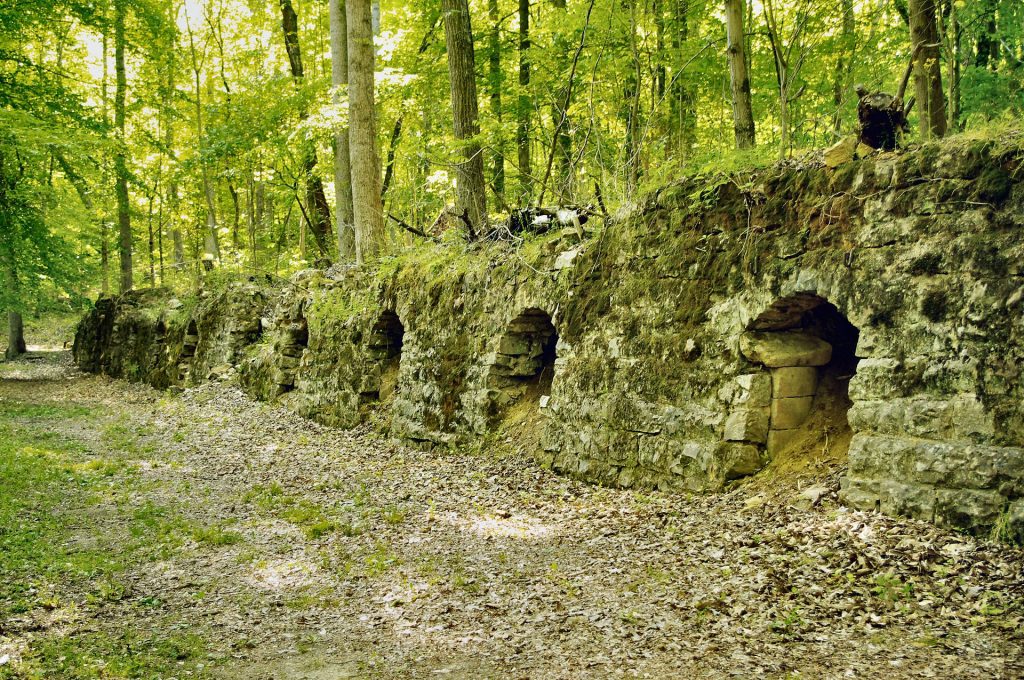Our History
The Trail of Tears, the Civil War, & Coal Mining

In December 1857, the Tennessee Legislature created Sequatchie County from two districts of Marion County and one district of Bledsoe County. In January 1858, the County Court met for the first time to appoint county officials. They voted to locate the county seat on the farm of William Rankin, on Coops Creek. Coops Creek became the town of Dunlap later that same year. Dunlap grew from forty acres purchased by the county commissioners into the fine small, but growing, town it is today.
Twenty years earlier, in November 1838, approximately 1,000 members of the Cherokee nation, led by a man named Richard Taylor, camped and traveled through a place in Sequatchie County now known as the Coke Ovens Park. This group was traveling with about 60 wagons pulled by mules and oxen to Oklahoma following one route on the Trail of Tears. Reverend Daniel Buttrick, a missionary traveling with the group, recorded this journey in his diary.
The Dunlap Coke Ovens Park and Museum has a copy of Reverend Buttrick’s diary and is well worth a visit. The park grounds are open till sunset. Visit the web site www.cokeovens.com for more information about tours and visits to the museum. The Dunlap Coke Ovens museum is an exact full size replica of a coal company store commissary, one built in 1902 by the Douglas Coal and Coke Company of Delaware. In 1899 this company launched coal mining operations in Sequatchie County. The museum was built by the Sequatchie Valley Historical Association and is maintained by volunteers from the Sequatchie Valley Historical Association and the Coke Ovens Museum Association. The museum houses the largest collection of regional historic coal mining photographs in Tennessee, and hundreds of donated artifacts are on display there.
Coal mining played a big part in the economic development of the county. In 1899, a coal mine was opened on Fredonia Mountain overlooking Dunlap, Tennessee. Constructed at the base of the mountain were a series of “beehive” ovens, designed to turn coal into coke for use in the iron and steel foundries of nearby Chattanooga. The first 24 ovens and the company store were built in 1902. In 1906, 144 ovens and a steam powered coal washer were constructed. In 1916 a new railroad up Little Brush Creek created the demand for more coke production. Along with a one million dollar coal washer, 100 more beehive coke ovens were built on the east end of the site. These last ovens and the coal washer were used very little due to the company filing for bankruptcy in the mid 1920’s. A total of 268 stone ovens had been built when, in 1927, the mining operations were shut down due to failing coal prices and the onset of the Depression.
The coke ovens lay dormant for more than 50 years. Today the ruins of the once thriving complex cover most of the 88-acre Coke Ovens Park. Bowater Southern Paper Company donated much of the property to the Historical Association for preservation. The sandstone and brick walls of the ovens still stand much as they looked when masons built them. Excavation work continues to uncover more of the ovens. The park has been placed on the National Register of Historic Places.
As for the Civil War, while the Southeastern Tennessee and Northwestern Georgia area is famous for its Civil War history, many are unaware Sequatchie County is where a very famous Civil War raid, called Wheeler’s Raid, took place. After losing the Battle of Chickamauga, Union Gen. William S. Rosecrans’s Army of the Cumberland had retreated to Chattanooga, Tennessee. A narrow, winding road through the Sequatchie Valley was the sole, tenuous supply line to the Union army. Very early in October 1863 Confederate Gen. Braxton Bragg, commanding the Army of Tennessee, ordered Maj. Gen. Joseph Wheeler to disrupt the Sequatchie Valley supply line. General Wheeler brought his raid through what is now Powell’s Cross Roads, in Marion County, Tennessee, and continued north on what is now East Valley Road and up what is now US 127 to Signal Mountain, also known as Walden’s Ridge. His troopers destroyed hundreds of wagons and took hundreds of prisoners. General Wheeler released the prisoners as he escaped the valley and returned to the safety of Confederate lines. A marker, located about half way up US 127 from the valley to the top of the ridge, identifies one place involved in the raid.

Connect
Connect with us on the following social media platforms.